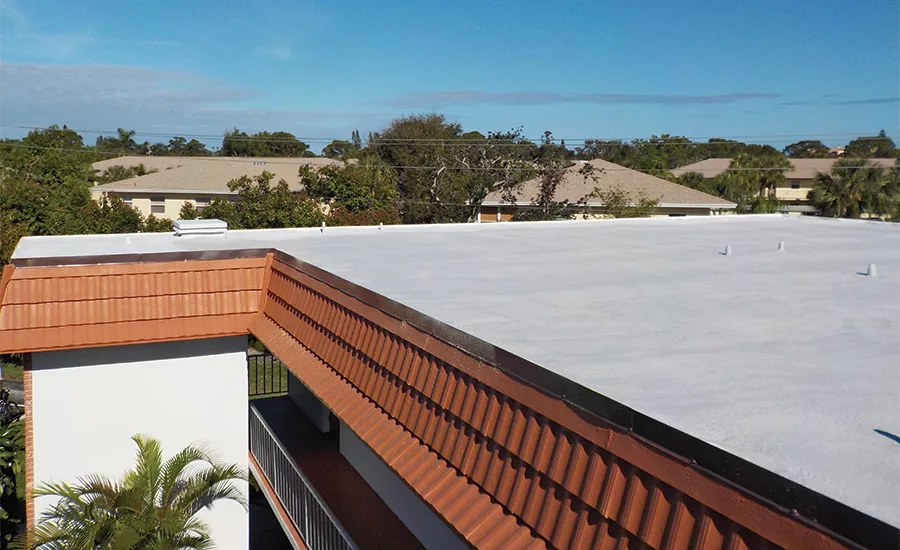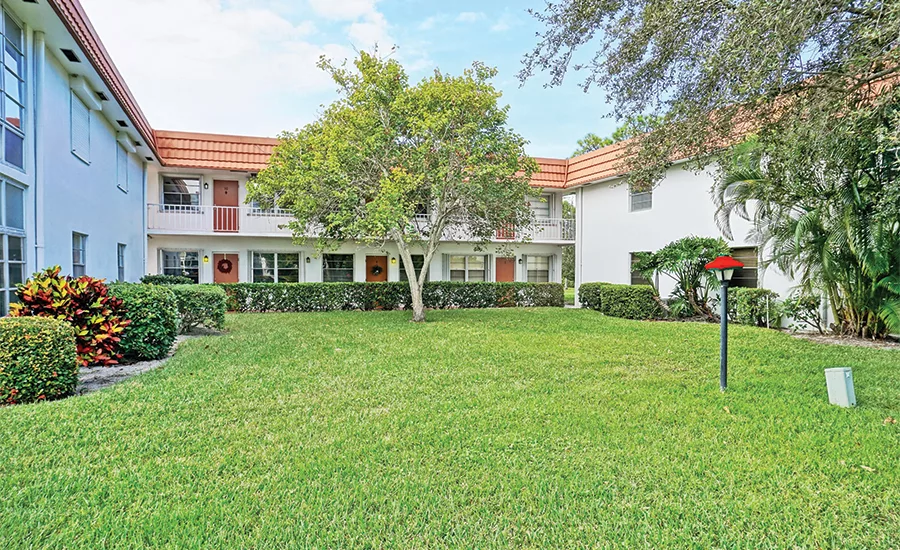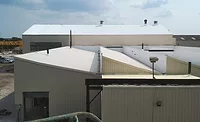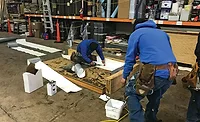Summer Spray Foam Maintenance
Repair & Replacement: A South Florida Community Case Study

For those looking to fix existing spray polyurethane foam roofs, or those looking to restore or fully replace existing roofs with a spray foam system, following is some guidance on what to consider.

For those looking to fix existing spray polyurethane foam roofs, or those looking to restore or fully replace existing roofs with a spray foam system, following is some guidance on what to consider.
It’s now summer and roofing season is well underway as homeowners and commercial facility owners take advantage of the moderate, drier weather to get their roofs repaired, restored or replaced. For those looking to fix existing spray polyurethane foam roofs, or those looking to restore or fully replace existing roofs with a spray foam system, following is some guidance on what to consider.
Spray Polyurethane Foam on the Roof
Spray polyurethane foam (SPF) roofing is a high density, rigid and closed-cell spray foam variety that may be applied over most new and retrofit roofing substrates. In roofing applications, SPF acts as a protective roofing layer, a thermal insulator, air barrier, vapor retarder and a waterproofing solution. The cost-efficient system may be applied to any shape and substrate.
Professionally spray-applied spray foam roofing locks every portion of the roof into place and uniquely creates a monolithic membrane atop the building, eliminating the need for mechanical fasteners. The durable material is lightweight yet offers a compressive strength of 40 to 60 pounds per inch. Considered a low maintenance roof option, it protects the structure from water intrusion, hail and wind uplift, which give it great performance as a storm-resistant construction material. Equally important, it acts as a high-performance insulator, preventing heat transfer through the roof deck, minimizing the escape of conditioned air and, in turn, dramatically reducing energy bills for the life of the roof (50 or more years with proper roof maintenance and care).
Ideal Applications
Spray polyurethane foam roofing systems are ideal for a wide range of commercial, agricultural, industrial and even residential applications. Specifically, spray foam may be utilized when the roof deck is of an unusual configuration or shape or when a sloped application is required to provide controlled drainage. Because of its material characteristics and ability to adhere and seal during application, spray foam works well in situations when the substrate includes numerous penetrations.
Additionally, because of its resiliency characteristics, spray foam roofing is also ideal is regions where significant rain, wind and weather cycling occurs.
Replacement vs. Restoration
For residential and commercial owners with existing roofs in total disrepair and deciding between total replacement or restoration, two common factors often influence the choice made — weight and cost. Oftentimes, full replacement is cost prohibitive and restoration is thus a more attractive option. Because spray foam may be directly applied over an existing roof, eliminating the need for the removal of that original roof, it is a cost-effective solution. Additionally, spray foam roofing is lightweight and is thus ideal for structures unable to bear significant additional load.
Protective Coatings
Spray polyurethane foam roofing must be coated once installation of the SPF is complete. The elastomeric reflective coating provides a protective barrier over the SPF, maintaining the integrity and performance of the roof and protecting it from UV radiation and the elements.
Maintenance of Your SPF Roof
Industry consensus included in the Spray Polyurethane Foam Alliance’s “Spray Polyurethane Foam Roof Systems Maintenance Manual”, calls for SPF roof inspection two or more times per year.
During inspections, gutters, scuppers and drains should be reviewed to ensure dirt and debris are not restricting drainage, that there is no presence of cracks in the coating or SPF in these locations and that screens and strainers are in place and secure.
Rooftop units and penetrations must also be checked to ensure flashings at all roof penetrations are properly sealed against weather. Additionally, condensation from HVAC units should be piped to drains, skylights should be checked for proper seal, heater stacks must have rain caps and seams in the units should be sealed with caulk.
Flashings, roof edges, expansion and control joints and other roof system terminations must all be reviewed. Additionally, the field or surface area of the roof system must be evaluated for damage caused by objects, vandalism, foot traffic, etc., as well as for blistering. Finally, inspection best practices call for a review of any defects potentially present in the roof. These may include erosion of either the coatings of the spray foam, moisture penetration, cracks or pinholes.
“Spray foam is a self-flashing membrane that is really easily maintained,” said Rick Cunningham, president of Highland Commercial Roofing in Baldwin Park, California. “Repairs aren’t usually a big deal. But some of the things you want to watch for are collecting debris, drainage issues, foot traffic damage, and the degradation of the reflective roof coating. However, if you inspect regularly, your roof will give you a long life.”
After living with spray foam roofs for more than 30 years, the association at Vista Pines Condominiums in Stuart, Fla., decided their roofs needed to be assessed. With an expensive warranty and maintenance agreement set to expire with an out-of-state contractor, they contacted Whiting Construction for advice.
The longest running spray foam roofing contractor in the region, Palm City, Fla.-based Whiting Construction recommended a thorough inspection of the roofs before making their recommendations to either continue maintenance of the existing roofing or find another solution. During inspection, Whiting Construction found the existing spray foam roofing had been installed in the 1980’s directly over the first non-SPF roof system. While the roofs were still functional, there were water drainage issues. There was evidence of poor adhesion, ponding water, cow patty repairs, and improper use of insert drains (using a 2” in a 4” pipe). Additionally, excessive coating (about 50-70mm) was present. The repairs and maintenance of the SPF roofs would have been cumbersome to maintain, as well as costly.
“A properly installed SPF roof should last the life of the building,” said Gene Whiting, president of Whiting Construction Inc. “But in this case it wasn’t going to be cost effective to maintain the existing roofs so we recommended full replacement.”
Vista Pines Condominiums agreed on a plan to replace five roofs every year, each 8,900 square feet, until the entire complex of 36 buildings had properly installed SPF roof systems. Whiting Construction selected Lapolla FOAM-LOK 2800 roofing spray foam and Lapolla THERMO-FLEX 1000 elastomeric coating, both manufactured by Icynene-Lapolla.
“Now that we have installed the new spray foam roofs, maintenance should occur regularly but will be fairly minimal,” adds Whiting. “Water will now drain more efficiently. The roofs will need to be re-coated, approximately every ten years. Also, there are some trees on the site, so we’ll need to regularly watch for branches and debris when we conduct regular inspections.”
Looking for a reprint of this article?
From high-res PDFs to custom plaques, order your copy today!





